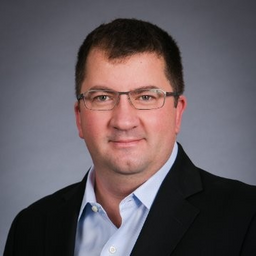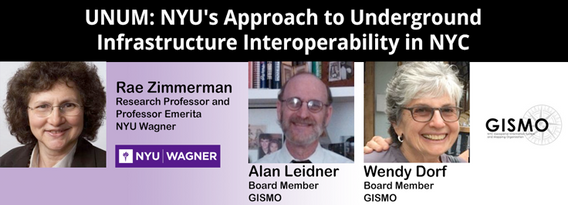Tuesday 22 March, 2022
The 2012 DT-DICT (Building without destroying) reform in France aims to prevent damage to utility networks. This legislation places heavy constraints on stakeholders because it requires them to georeference all networks in the vicinity of construction work with centimetric accuracy by 2032, everywhere in the country. Patrice Lemire, CEO ...
Albeit industry efforts, over 1 million underground utilities are annually hit around the world, with estimated damages exceeding $100 billion, not considering billions invested in technologies and inefficient processes aimed to protect utilities during earthworks operations. Available utility data is usually unreliable, and even if data is accurate, the excavator operator may still damage a utility.
Gyroscopic mapping of underground ducts and pipes has been around for a few decades now, and it continues to gain traction amongst the worlds' utilities as an accurate and unique technology. Nevertheless, the market perception until now is that Gyro-mapping, as it's also often referred to, is more expensive than traditional mapping and locating technologies. And although that perception is true, it is not due to the cost of the technology, but rather...
Arising 3-D modeling, visualization, and design software (e.g., BIM, VDC) greatly enhance advanced project designs with sophisticated risk analytics and conflict resolutions that accommodate existing infrastructure and enable proactive/predictive engineering and construction. However, without standardized and accurate utility data, new advanced digital project delivery and damage prevention technologies are compromised...
As the world continues to grow and urbanize, new urban infrastructure is being constructed at an unprecedented rate while old world infrastructure is being replaced and upgraded. This has lead to a greater demand for accurate and current utility locating and mapping. This demand is further exacerbated by the fact that infrastructure construction costs continue to rise and the slightest delay or extra cost associated with insufficient utility locating has an...
Digitizing and project management for infrastructure can be a complicated walled process. Leveraging Scribble Maps can allow for the rapid creation of vector data based on paper maps. Further, productivity and ROI can be improved by the leveraging of non-formally trained GIS employees via GIS managers.
This presentation will be focusing on the advancement of "Cloud and Mobile" technologies that are currenlty being used to easily and accurately map assets and underground utilities that can be shared, re-located and leveraged thoughout the many project phases.It is critical that data accruacy and integrity is leveraged and accumulated throughout every phase of the BIM procress, creating a live "digital twin" all the way back to t...
Utilities and their Contractor Organizations have traditionally been responsible for the safe and effective construction of new underground facilities. An important aspect of the construction process is the accurate documentation and location of the newly installed assets for update into the Utilities’ Geographic Information Systems, Work Management Systems and Asset Repositories. This process is typically performed via paper-based folders that may contain missing or incorrect attribute da...
Abstract:The total cost of underground infrastructure damage in Canada during excavation work is estimated to be over $1 billion dollars annually. The primary cause of these damage incidents is the lack of reliable information on the location and other information about buried utilities and other infrastructure. The Canadian Underground Infrastructure Register project is intended to improve the current damage prevention process by providing access to reliable data t...
Wednesday 23 March, 2022
In Singapore, almost all utilities are buried underground to free up valuable above ground space for more liveable environment. These underground assets which consist of power cables, telecommunication lines, water pipes, gas pipes and wastewater networks are critical infrastructure that keep our city functioning. Most cities have not been able to keep reliable, complete, and up-to-date maps of their underground utilities due t...
Synopsis: The UK National Underground Asset Register has gone through rigorous pilot and preparation phases and has learned a lot about the data which we will share for 3 regions before a national roll out. However, despite all the best laid plans there will always be exceptions and unexpected scenarios which will need to either be fitted into the data model or have the data model change in order to fit them. The way in which we make these changes could make or break a project like this wh...
Utility and energy buried pipelines represent an extensive underground network covering most of a country's territory. Their precise lateral, horizontal positioning along with their depth of cover is a critical element of any operator's GIS. It enables to deploy more accurate pipeline predictive maintenance models and avoid third party interferences. The latter being identified as one of the main causes of pipeline failures. The 2020 CGA Dirt report states that 3...
A longstanding and unsolved problem for utility companies has been how to keep geospatial network asset data up to date as networks are extended and maintained. Currently, it can take weeks if not months for “as-built” changes to make their way back into the enterprise system of record, typically a geographic information system (GIS). Existing mobile solutions can enable workers in the field to capture data about network asset data updates, but are too time consuming and comple...
NYU and GISMO's Unification for Underground Resilience Measures (UNUM) is a multi-faceted research initiative aiming to improve our understanding of the city's underground infrastructure assets from the community level through city government and private asset holders. The many activities within the scope of this project include: community collaboration on developing a digital twin of their neighborhood, use of open data to develop an integrated application ...
As one of the oldest American cities, Boston holds a rich history and culture that runs not only through the streets but also beneath them. Many of the large underground infrastructure projects completed between the late 1890s and the late 1920s in Boston are still in use today. The preservation of infrastructure and the insights gleaned from the practices used to create it provide valuable lessons in how to maintain standards of excellen...
We live in a world where the skill required to interpret maps and engineering drawings is decreasing while the density of underground networks is increasing. The result is increased collateral damage, network outages and poor health & safety outcomes for our field workers.Today, we need better ways to accurately capture and comprehend the location and nature of those networks that are out of site under our feet. AR (Augmented...
Leading construction companies are finding a new software as a service component that enables them to view their virtual sites, saving them time and money. This technology breakthrough enabled pioneer construction companies serving clients in multiple industries (colleges, hospitals, residential compounds, malls) to use a new way of representing information about their buildings and utilities, above ground and underground. Benefits include avoiding planning mista...
Due to aging and lack of accurate utility location information, there is significant underground congestion and conflict. This results in increased operational risk especially at waterway, transportation, and utility crossings. The IMU Mapping methods are able to mitigate these risks by providing accurate digital as-built positional data at trenchless crossings, constructed via HDD methods. Unlike other technology mapping solutions, which rely on sending signals below ground, in-line IMU M...
Thursday 24 March, 2022
GIS platforms are typically populated with XYZ coordinates with a point spacing of 1 meter or more. in fact, most traditional land surveying techniques, like GPS, often have a point spacing of 3 meters or more, and that is understandable given the procedure to obtain these points. But have you ever wondered what amount of detail is lost when increasing the point frequency? Well, in this seminar, Otto Ballintijn will demonstrate the impact point frequency has on pipe detail usin...
Scribble Maps is an easy-to-use online GIS and web mapping visualization solution. The software has a robust toolset along with vast operations that can help you annotate maps, plot territories, filter and analyze data, optimize routes, add images, and more.Our powerful mapping software can easily be integrated with many different file formats including GeoJson, SHP, KML, CSV, GPX, DXF, and PDF. Founded in 2009, Scribble Maps has been developed from direct user f...
Reveal is building the world's most advanced and accurate digital twin technology for subsurface infrastructure. We're driving a safer, more efficient and sustainable world by revealing the truth of the underground. Join us for a 30min presentation where we will be showcasing our technology through our flagship project in Wellington, New Zealand.
Friday 25 March, 2022
An overview of Prostar's "Cloud and Mobile Precision Field Data Collection Solution and the set up of the ProStar "PointMan Plus" application FREE to WorkShop attendees. PointMan is a patented cloud and mobile mapping software application that captures, records, and displays the precise location and the associated metadata of critical surface and subsurface infrastructure, all in "real-time" Workshop includes: -1 FREE annual subscription of...
For decades, cities have required all utilities, communication providers and municipal services providers to build their facilities below ground. In addition, the increase in severe natural disaster conditions have driven traditional overhead utilities to revise their construction standards and build their new facilities underground. As the proliferation of underground construction continues, all utility groups must improve their procedures to ensure that any newly installed fa...




































































